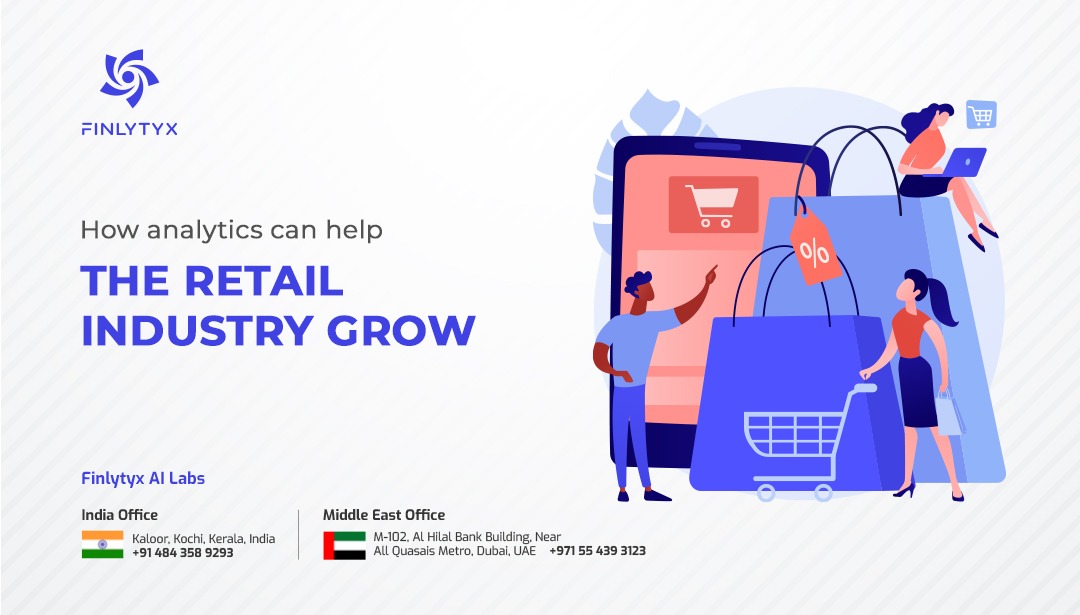
Retail analytics is the analysis of data generated by retail operations with the goal of making business decisions that drive profitability. It processes the analysis of data on inventory levels, supply chain movement, consumer demand, sales, etc. which are crucial for making marketing, and procurement decisions. It gives detailed insights into customers, business processes, etc. of the organization with the scope and needs for improvement. BI or Business Intelligence tools can be integrated into such analytical platforms to get dynamic insights and predictions.
Big data describes a large volume of data that is used to reveal patterns, trends, and associations, especially relating to human behavior and interactions. For the retail industry, big data means a greater understanding of consumer shopping habits and how to attract new customers.
How do retailers use data?
The most common way how retailers collect data is through customer loyalty programs. Also credit card transactions, browsing data, log-in info, IP address, etc. More the data collected, more insights are revealed.
1. Spend Prediction
Based on your purchasing history and past searches, recommendation systems are built which can generate increased sales.
2. Forecasting Demand
Algorithms on social media trends and web browsing data predict trend changes in the market so that they can get ready to meet those demands in a competitive environment. Also, weather forecasts also used to predict customer preferences in a day/period.
3. Customized Personal Experience
Recommending products according to customer interests and customization of products according to customer demands.
4. Customer Churn
Customer loyalty isn’t straight always. Analytics can give insights into why they lose customers. What are the value additions they can offer to retain customers?
In-Store Analytics:
In-Store data gathers the most important figures for analytics and reveals what’s actually happening across retail stores. The common metrics associated with in-store analytics are foot traffic, dwell time, conversion rate (customer to sales), etc.
Customer Analytics:
Understanding customer behavior across retail stores are pivotal for establishing customer relationships and creating engaging experiences. Most of such customer data can be extracted through POS systems, loyalty programs, surveys, feedback forms, etc.
These extracted data points can be used to build recommendation engines, sales promotions, inventory optimization, and to create an engaging store layout.
Inventory Analytics:
A balanced inventory is essential for the optimized capital structure of a business. Inventory analytics flashes to predictive analytics and helps management to anticipate inventory requirements for operation according to market demand and supply. Adjusting inventory to express customer needs can reduce unnecessary stock and operate seamlessly.
Attribute Analytics:
Customized products are always preferred by most customers. Attribute analytics defines customer preferences. These descriptions can be color, material, size, silhouette, flavor, etc. Understanding such preferences and responding to such interests can reflect positively on customer satisfaction, sales, inventory optimization, and so on.
Logistics Analytics:
Logistic analytics or supply chain analytics are crucial for marketing and procurement decisions. The most common metrics associated with supply chain analytics are Order time, Cash-to-Cash Cycle time, Route optimization, Capacity planning and demand forecasting, supply chain cost per sales percent, etc.
Web Analytics:
In Online retail sales, web analytics help retailers understand customer behavior based on location, browsing data, purchase trends, cart history, related searches, etc. These data are then tuned to get insights and build pricing strategies, online ad campaigns, demand analysis, customer personalized experiences, etc.
Apart from these analysis strategies, AI or Artificial Intelligence enabled analytics are dominating in today’s technology. They provide automated and accurate predictions or forecasts upon on our data and assist businesses to respond quickly and effectively in the modern dynamic market environment.
We at Finlytyx help our customers identify opportunities by leveraging their internal and external data. We leverage emerging technologies such as Power BI, Qlik, and Tableau in the data and analytics space to maximize the business impact while engaging us for the data analytics services. An interactive dashboard that consolidates the KPIs covering key aspects of their business will make the senior executives’ life easy moreover it proactively takes their attention to the critical business elements which can be a business value or an eye opener to serious operational risk. We see a large trend in moving towards Power BI for executive dashboard and data analytics developments, this is due to the cost-effectiveness, ease of deployment, free-of-cost cloud adoption, mobile access features, etc.
Connect with Finlytyx for a detailed business case study; we have built industry-specific analytics & dashboard that can be easily accommodated to meet your business purpose.
Author
![]() Abdul Raees
Abdul Raees
Financial Business Management Specialist – Finlytyx AI Labs Pvt Ltd
Recent Blogs
-
 AI, Automation & Digitalization Revolutionizing Financial Modeling in the Quick Service Restaurant & Retail Indus Introduction
AI, Automation & Digitalization Revolutionizing Financial Modeling in the Quick Service Restaurant & Retail Indus Introduction -
 Solving Financial Consolidation Challenges with Jedox
Solving Financial Consolidation Challenges with Jedox -
 Transforming Financial Planning In an FMCG.
Transforming Financial Planning In an FMCG. -
 Why a Systematic Approach to FP&A is Essential for a Predictable Business Growth
Why a Systematic Approach to FP&A is Essential for a Predictable Business Growth -
 From Generative AI to AGI
From Generative AI to AGI
Request for services
Find out more about how we can help your organization navigate its next. Let us know your areas of interest so that we can serve you better.
Share your project details with us and receive a free consultation.




